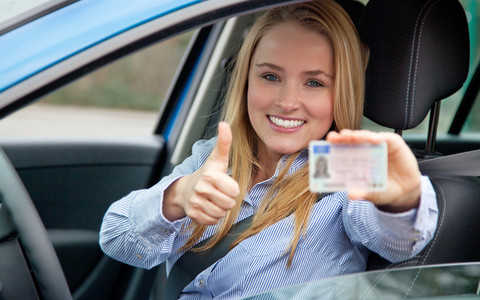The Companies That Are The Least Well-Known To In The Driving License Store Industry

The Evolution of Driving License Storage: A Comprehensive Guide
In the ever-evolving landscape of innovation and administration, the method we manage and store our driving licenses has actually gone through considerable changes. From standard paper cards to digital formats, the journey of driving license storage reflects wider patterns in identity management and security. This short article looks into the history, existing practices, and future potential customers of driving license storage, providing a comprehensive summary for both people and policymakers.
A Brief History of Driving Licenses
The concept of a driving license go back to the early 20th century when vehicles started to acquire popularity. Initially, driving licenses were easy papers or metal plates provided by local authorities. These early licenses were often handwritten and did not have the security features we consider given today.
As the variety of lorries on the road increased, so did the need for more standardized and safe and secure licensing systems. By the mid-20th century, many nations had adopted plastic cards with printed info and fundamental security features such as holograms and watermarks. These cards were more durable and more difficult to create, however they still had restrictions.
Present Practices in Driving License Storage
Today, driving licenses are usually stored in a mix of physical and digital formats. Here's a more detailed look at the existing practices:
Physical Licenses
- Plastic Cards: Most countries provide driving licenses in the kind of plastic cards. These cards are durable and consist of a series of security features to avoid counterfeiting.
- Holograms and Microprinting: Modern licenses often incorporate holograms and microprinting, which are hard to reproduce without customized devices.
- Barcodes and QR Codes: Many licenses now include barcodes or QR codes that can be scanned to verify the authenticity of the document and gain access to additional info.
Digital Licenses
- Mobile Apps: Some countries have presented digital driving licenses that can be saved on mobile phones. These apps supply a safe and secure and hassle-free way to bring and provide a driving license.
- Blockchain Technology: Blockchain is being explored as a means to develop tamper-proof digital driving licenses. This technology makes sure that the details is immutable and can be validated without the requirement for a main authority.
- Cloud Storage: Some jurisdictions are try out cloud-based systems where driving license information is saved and accessed through protected online portals.
Advantages and Challenges of Modern Driving License Storage
The transition to modern driving license storage techniques brings numerous advantages and challenges:
Benefits:
- Convenience: Digital licenses can be quickly accessed and provided using a smart device, getting rid of the requirement to bring a physical card.
- Security: Advanced security features and digital verification methods make it harder to forge or alter driving licenses.
- Efficiency: Digital systems can improve the process of issuing and restoring licenses, decreasing administrative problems and wait times.
Challenges:
- Digital Divide: Not everyone has access to a smartphone or the internet, which can create disparities in who can benefit from digital licenses.
- Personal privacy Concerns: Storing personal information in digital formats raises issues about information personal privacy and security.
- Technical Issues: Digital systems can be susceptible to technical failures, such as server interruptions or app crashes, which can render a digital license momentarily unusable.
Future Prospects
The future of driving license storage is likely to be formed by continuous technological advancements and changing societal requirements. Here are some prospective advancements:
- Biometric Integration: Biometric data, such as finger prints or facial acknowledgment, could be integrated into driving licenses to improve security and individual recognition.
- Smart Contracts: Blockchain-based wise agreements might automate the process of license renewal and validation, making it more efficient and transparent.
- International Standardization: As more nations adopt digital driving licenses, there might be a push for international requirements to make sure interoperability and shared recognition.
FAQs
Q: What are the main security functions of contemporary driving licenses?
- A: Modern driving licenses often consist of holograms, microprinting, barcodes, and QR codes. These functions make it difficult to create or change the license.
Q: Can I utilize a digital driving license instead of a physical one?
- A: It depends on the jurisdiction. Some nations permit digital licenses to be used in place of physical ones, while others require both. Always check local policies.
Q: What should I do if I lose my driving license?
- A: If you lose your driving license, you need to report it to the appropriate authority immediately. They will assist you through the process of obtaining a replacement.
Q: Are digital driving licenses protect?
- A: Digital driving licenses are typically safe and secure, however they are not immune to technical issues or hacking. A lot of jurisdictions utilize encryption and other security steps to protect the information.
Q: How can I safeguard my personal privacy with a digital driving license?
- A: To secure your privacy, utilize strong passwords, make it possible for two-factor authentication, and beware about sharing your digital license details. Furthermore, remain informed about the data privacy policies of the app or service you utilize.
The evolution of driving license storage is a testament to the ongoing improvements in technology and administration. While physical licenses stay a common type of recognition, the rise of digital licenses offers brand-new levels of benefit and security. As egzamin na prawo jazdy kartaxpresspoland continues to advance, the future of driving license storage is most likely to end up being much more integrated and efficient, benefiting both people and society as a whole.

